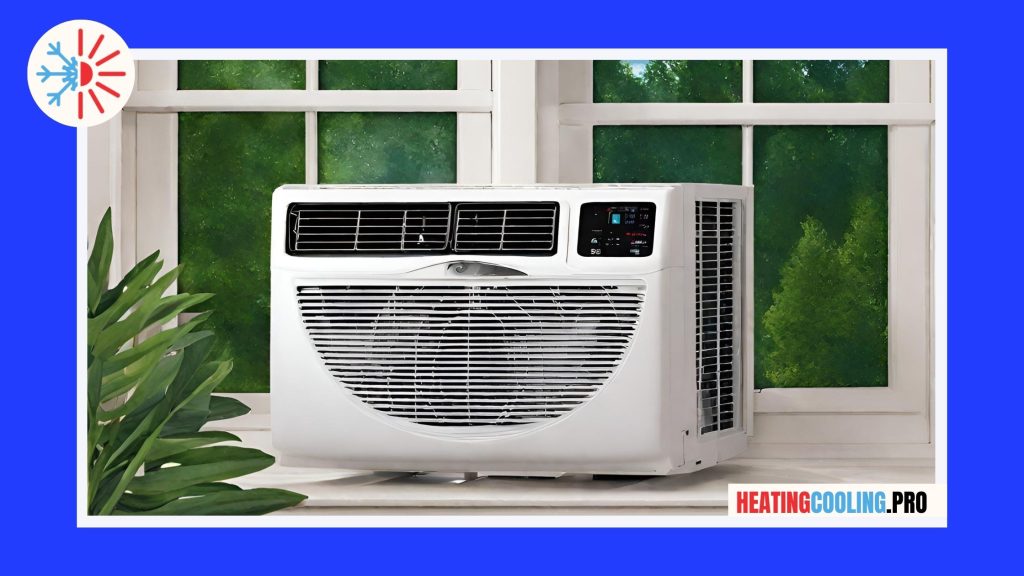Air conditioners are essential appliances in modern homes and workplaces, providing cool and comfortable environments during hot summer months. When it comes to air conditioning systems, two popular options are split-system and window air conditioners. While both serve the same purpose of cooling a space, they differ in terms of installation, capacity, efficiency, and overall performance. In this article, we will delve into the intricacies of split-system and window air conditioners to help you make an informed decision based on your specific needs and preferences.
Definition and Components

A split-system air conditioner consists of two main components: an indoor unit, also known as the evaporator, and an outdoor unit, known as the condenser. These two units are connected by refrigerant lines and electrical cables. On the other hand, a window air conditioner is a self-contained unit that is mounted on a window or a hole in the wall. It comprises all the necessary components, including the evaporator, condenser, compressor, and fan, in a single unit.
Installation
Installing a split-system air conditioner requires professional assistance as it involves mounting the indoor unit on a wall or ceiling, positioning the outdoor unit on a flat surface outside the building, and connecting the refrigerant lines and electrical cables. This installation process can be time-consuming and may require modifications to the structure of the building. Conversely, a window air conditioner offers a simpler installation process as it only requires securing the unit in a window or wall hole and plugging it into an electrical outlet.
Capacity and Coverage

Split-system air conditioners are available in a wide range of capacities, ranging from small units suitable for individual rooms to large units capable of cooling entire buildings. The cooling capacity of a split-system air conditioner is measured in British Thermal Units (BTUs), and the larger the BTU rating, the greater the cooling power. Window air conditioners, although available in various sizes, are generally designed for cooling smaller spaces, such as individual rooms or small apartments. Therefore, they have a lower cooling capacity compared to split-system air conditioners.
Efficiency and Energy Consumption
Split-system air conditioners are often more energy-efficient compared to window air conditioners. This is due to the separate components, which allow for better control over individual areas, resulting in more precise temperature regulation and reduced energy wastage. Additionally, split-system air conditioners often have higher Seasonal Energy Efficiency Ratio (SEER) ratings, indicating better energy efficiency. On the contrary, window air conditioners are known to be less energy-efficient as they cool the entire space, including areas that may not require cooling.
Noise Levels

Noise can be a significant concern when selecting an air conditioner. Split-system air conditioners tend to be quieter because the compressor, which is the loudest component, is placed outside the building. This ensures that the noise generated by the compressor does not disturb the indoor environment. In contrast, window air conditioners can be noisier as all the components, including the compressor, are housed within a single unit, which is typically located inside the room being cooled.
Aesthetics and Space Considerations
Split-system air conditioners are favored for their sleek and unobtrusive design. The indoor unit can be discreetly mounted on a wall or ceiling, blending seamlessly with the room decor. The outdoor unit, although larger, can be positioned in a less visible area, such as a backyard or on the roof. Window air conditioners, on the other hand, can be visually less appealing as they obstruct the view from the window and can disrupt the aesthetics of a room. Additionally, window air conditioners are not suitable for buildings without windows or where space is limited.
Which Ac Is Best Window Or Split Or Portable?

Window ACs are the most popular type of ACs and are available in a wide range of prices and sizes. They are easy to install and are the most affordable type of AC. Split ACs are more expensive than window ACs, but are more efficient and can cool a larger area. They are also more difficult to install and require a professional to do the job.
Portable ACs are the most expensive type of AC, but they are the most versatile. They can be moved from room to room and are great for small apartments or homes. Portable ACs come in two types: window or wall-mounted. Window-mounted portable ACs must be installed in a window and use the window as an exhaust to expel the hot air. Wall-mounted portable ACs do not require installation and can be placed anywhere in a room.
- Portable ACs are available in three sizes: small, medium, and large. Small portable ACs are best for small apartments or rooms, medium portable ACs are best for rooms up to 400 square feet, and large portable ACs are best for rooms up to 500 square feet.
- Portable ACs come in two types of cooling: evaporative and refrigerative. Evaporative portable ACs are more energy-efficient but do not cool as well as refrigerative portable ACs. Refrigerative portable ACs are more expensive but cool better than evaporative portable ACs.
- Portable ACs come in two types of air flow: horizontal and vertical . Horizontal air flow portable ACs are more energy-efficient but do not cool as well as vertical air flow portable ACs. Vertical air flow portable ACs are more expensive but cool better than horizontal air flow portable ACs.
When choosing a portable AC, it is important to consider the type of cooling and air flow. Evaporative cooling is more energy-efficient but does not cool as well as refrigerative cooling. Refrigerative cooling is more expensive but it cools better than evaporative cooling. Portable ACs also come in two types of air flow: horizontal and vertical. Horizontal air flow portable ACs are more energy-efficient but do not cool as well as vertical air flow portable ACs. Vertical air flow portable ACs are more expensive but they cool better than horizontal air flow portable ACs.
What Are The Disadvantages Of Window Ac?

Window ACs have many disadvantages when compared to central air conditioning systems. They are less efficient, they are less effective at cooling a space, and they are more expensive to operate. Window ACs are less efficient because they only cool the space that they are in. Central air conditioning systems cool the entire house, which means that they are more effective at cooling a space. Window ACs are also more expensive to operate because they use more electricity than central air conditioning systems. Window ACs are less efficient because they only cool a single room. A central air conditioning system can cool an entire house.
Window ACs are also more expensive to operate because they use more energy. Window ACs are more expensive to operate because they use more energy. This is because they have to use more power to cool a room that is already closed off from the rest of the house. A central AC, on the other hand, can cool an entire house using less energy because the air is circulated more efficiently. Window ACs can also be a safety hazard. They can fall out of the window and injure people below. window ACs should always be properly installed by a professional to ensure that they are secure and will not fall out of the window.
What Are The Disadvantages Of Split Ac?
Split ACs have a number of disadvantages when compared to other types of air conditioners. First, they are less efficient than central air conditioners, which means that they require more energy to operate and can be more expensive to run. Second, split ACs can be more expensive to purchase than other types of air conditioners. Finally, split ACs can be more difficult to install than other types of air conditioners.
- The first disadvantage of a split AC is that they are more expensive to buy and install than other types of ACs.
- They are also more expensive to operate and maintain, and they usually have a shorter lifespan than other types of ACs.
Split ACs are also less energy efficient than other types of ACs, and they produce more noise and pollution. Window air conditioners use about 1,500 watts of electricity, while split air conditioners use about 3,000 watts. So, if you have a choice between a window AC and a split AC, the window AC will be more energy efficient.
Window air conditioners also produce more noise and pollution than split air conditioners. Window ACs produce about 50 decibels of noise, while split ACs produce about 30 decibels of noise. Split ACs also produce less pollution than window ACs.
Conclusion
In summary, the choice between a split-system and a window air conditioner ultimately depends on several factors, including the size of the space to be cooled, installation requirements, efficiency expectations, noise tolerance, and aesthetic preferences. While split-system air conditioners offer greater cooling capacity, energy efficiency, and aesthetic appeal, window air conditioners provide a simpler installation process and are more suitable for smaller spaces. Assessing your specific needs and considering the pros and cons of each type will help you make an informed decision and ensure optimal comfort during those hot summer months.






